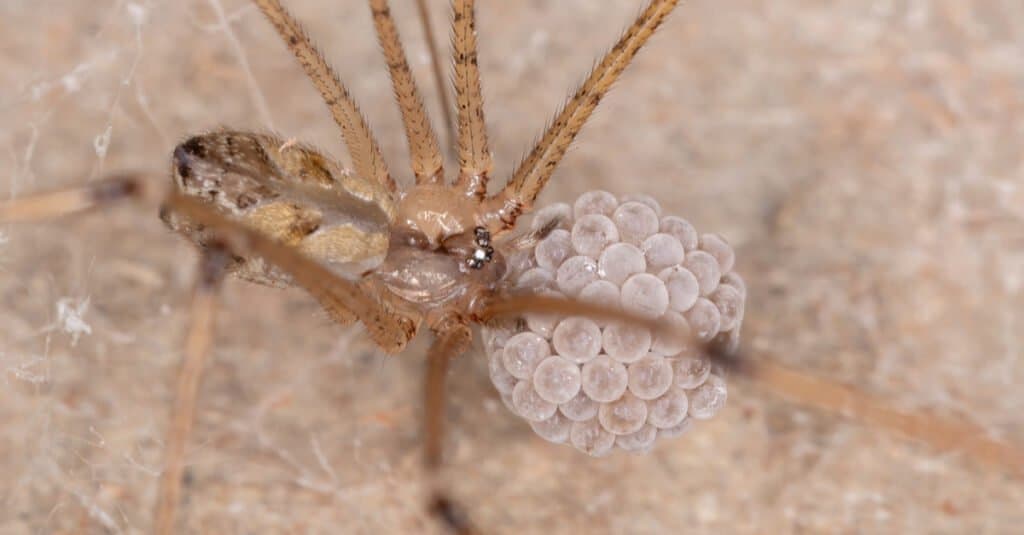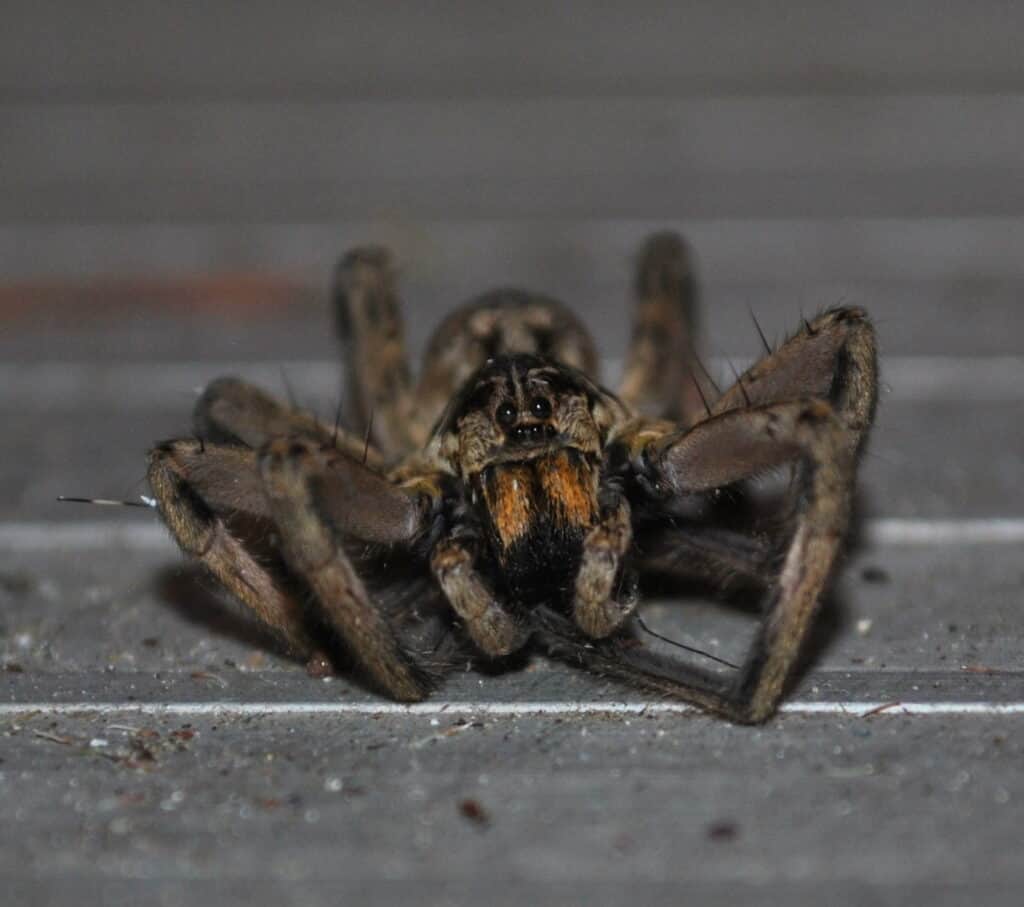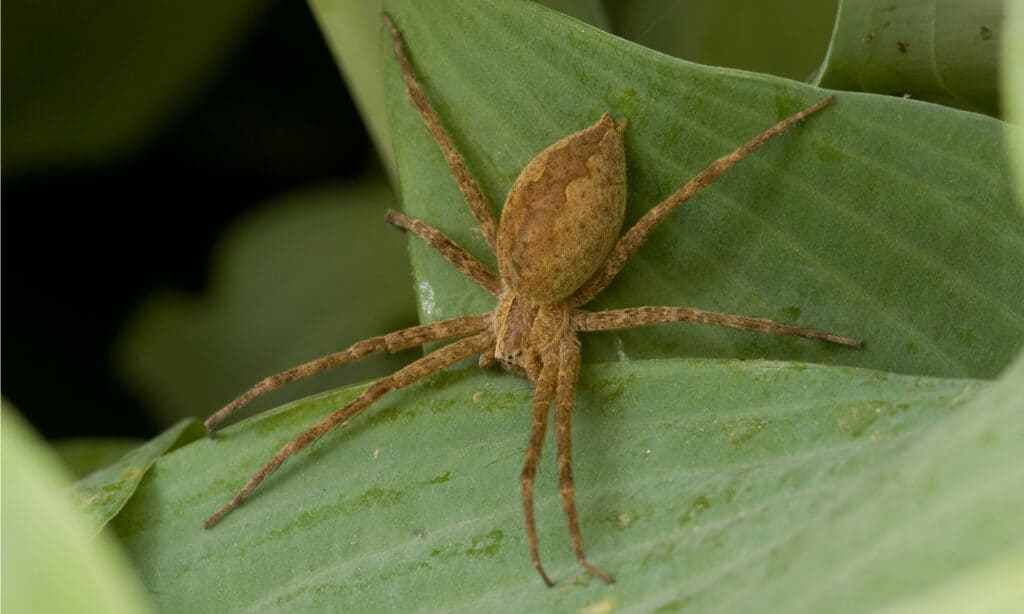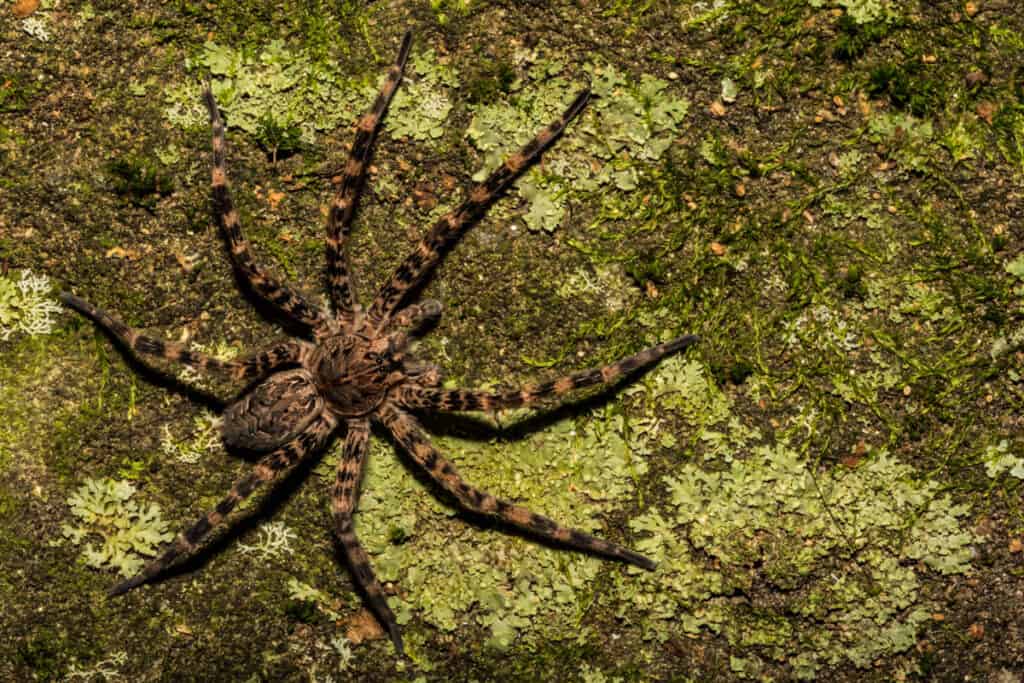Although most people think of the Big Apple when someone mentions New York, the truth is that a great deal of the state is mountainous forests, lakes, and other rural areas rather than an urban environment. As such, the state is home to a myriad of wild animals, including arachnids. So, what are the biggest spiders in New York? Are they dangerous?
Those are the questions that we will answer as we identify 5 of the biggest spiders in the state. By the time you’ve finished reading, you’ll know about the largest spiders, their dangers, and what they look like!
What Are the Biggest Spiders in New York?
Once you leave the bright lights of its cities behind, you’ll find all sorts of interesting creatures dwelling in New York. Among them are somewhat large spiders, with many of them measuring up to two inches or more. Keep in mind that we’re measuring the entire creature and not just their body size to come up with the biggest spiders in New York.
After all, when you tell someone about a spider you saw that was “this big,” you don’t just count their head and abdomen, right?
5. Long-Bodied Cellar Spider

Cellar spiders are not as dangerous as they look.
©iStock.com/ViniSouza128
| Scientific Name | Size | Danger to Humans |
|---|---|---|
| Pholcus phalangioides | 1-2 inches | A bite may cause a mild burning sensation. |
The long-bodied cellar spider is a common sight in basements and garages throughout New England. It is often called daddy long legs spider, but it is not to be confused with the non-spider harvestman.
Cellar spiders have an especially high ratio of leg size to body size. The first thing that most people notice about these spiders is their unique color. They are translucent with a brownish-gray color and have dark brown markings on their cephalothorax.
Although they may look scary, they can’t harm people that much. Despite what legends may tell you about these spiders, cellar spiders’ bite will only cause mild burning and not fatal injuries. Still, it’s best to leave these spiders alone or to whisk them out of your basement without handling them directly.
4. Wolf Spider

Hogna baltimoriana possesses long, powerful legs that it uses to chase after prey.
©Aaron Carlson / CC BY-SA 2.0, Flickr – License
| Scientific Name | Size | Danger to Humans |
|---|---|---|
| Hogna baltimoriana | 1-2 inches | A bite may cause swelling, pain, and redness that lingers for a while and diminishes. |
Many types of wolf spiders prowl New York, including larger members of the Hogna genus. Like other wolf spiders, the Hogna baltimoriana is a spider that pursues and kills prey rather than setting a web. These spiders are often found near their burrows from which they ambush and kill prey.
That means you need to watch where you put your hands when you’re hiking or even if you’re outside in a rural or suburban area with tall grass. This spider is usually gray, light brown, or brown with dark markings covering its cephalothorax and abdomen, especially in the middle portions.
Wolf spiders may grow up to 2 inches long, leading many people to be frightened of them. After all, their size is off-putting, and many people mistakenly believe that any wolf spider can cause them harm.
The truth is that they probably won’t bite a human at all. Even if they don’t run from you and decide to attack, you’ll get a bit of swelling, some pain, and a little redness that quickly goes away.
3. Black and Yellow Garden Spider

The black and yellow garden spider has a unique web.
©iStock.com/AwakenedEye
| Scientific Name | Size | Danger to Humans |
|---|---|---|
| Argiope aurantia | 0.2-3 inches | Rarely bites humans, but it may cause pain and swelling. |
The black and yellow garden spider is sometimes called the writing spider because of their web design. They produce large webs to capture prey, but they have an extra-thick, zig-zagged line running through a portion of the web. This is called a stabilimentum. While its function is debated among experts, the fact is that it is a means to identify the spider from afar.
The black and yellow garden spider is easily identified by its body as well. It is known for having a gray-silver cephalothorax, a black and yellow body, and legs that are brown where they connect with the body and black as they continue to the latter portions.
At least, that is the case with females. Males are duller colors and much smaller. These spiders do not like to be disturbed, and they may bite if they are handled. Their bites can cause pain and swelling, but not much more harm than that.
2. American Nursery Web Spider

Females can eat male nursery web spiders.
©SDeming/Shutterstock.com
| Scientific Name | Size | Danger to Humans |
|---|---|---|
| Pisaurina mira | 1-3 inches | Has a bite that is mostly harmless to humans, with pain and swelling common. |
The American nursery web spider is a rather plain-looking creature that is much cooler than its looks suggest. The spider usually has a light brown body, with a dark brown stripe running down the cephalothorax and abdomen. The border of this large stripe may be very light, almost white, and they have a bulbous abdomen.
The spider’s most interesting facets come from its behaviors and web design. This spider is known for being sexually cannibalistic, meaning that the female tries to eat its male mate. They are not always successful in this endeavor, though.
The other noteworthy thing about this spider, other than its size, is that it makes a unique web nursery for its young when they are close to hatching. The spider is harmless to humans, though. Their bite may cause some discomfort and swelling, but probably nothing more.
1. Dark Fishing Spider

The dark fishing spider is one of the largest members of its genus, but it’s not very dangerous to humans.
©iStock.com/JasonOndreicka
| Scientific Name | Size | Danger to Humans |
|---|---|---|
| Dolomedes tenebrosus | 3.5-4.5 inches | Can bite humans and cause a reaction similar to a bee sting. |
The dark fishing spider is the biggest spider in New York, and it’s also one of the largest members of its family. This spider may or may not live very close to water, sometimes preferring to spend significant amounts of time on trees.
The spider has a dark brown, gray, or nearly black body with brown chevrons running down its otherwise dark legs. Dark fishing spiders are easiest to discern by their size alone since they get so large. Although they’re big, they are not likely to bite humans. In the rare case that they do bite you, the experience is likened to a wasp bite or a bee sting.
As you can see, the biggest spiders in New York are fairly large, but they’re certainly not the size of tarantulas. Although the vast majority of spiders in this state won’t hurt you, it’s a good idea to watch out for dangerous spiders like the yellow-sac spider.
Also, while it’s very rarely seen in the state, black widows have been known to appear in the area. Make sure to exercise caution around those arachnids, and you should be fine.
Up Next:
- 5 of the Biggest Spiders in Rhode Island
- 5 of the Biggest Spiders in Vermont
- 3 Biggest Spiders in Connecticut
The photo featured at the top of this post is © iStock.com/JasonOndreicka
Thank you for reading! Have some feedback for us? Contact the AZ Animals editorial team.






